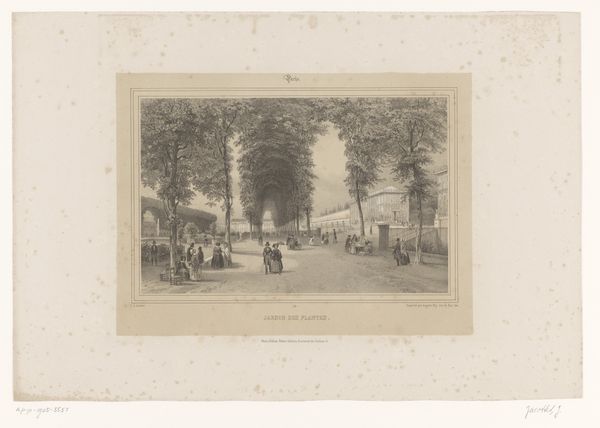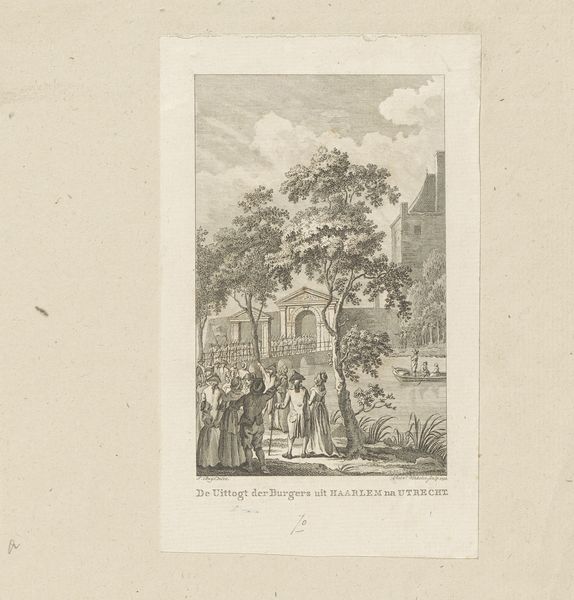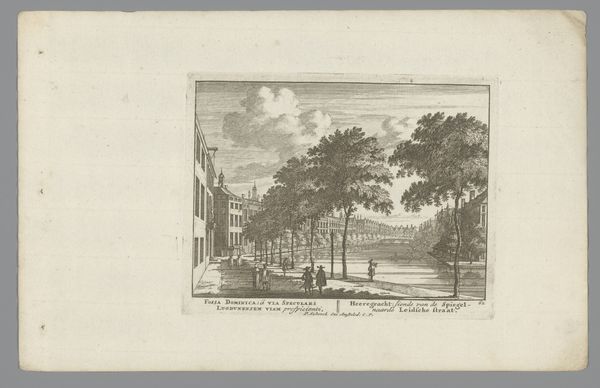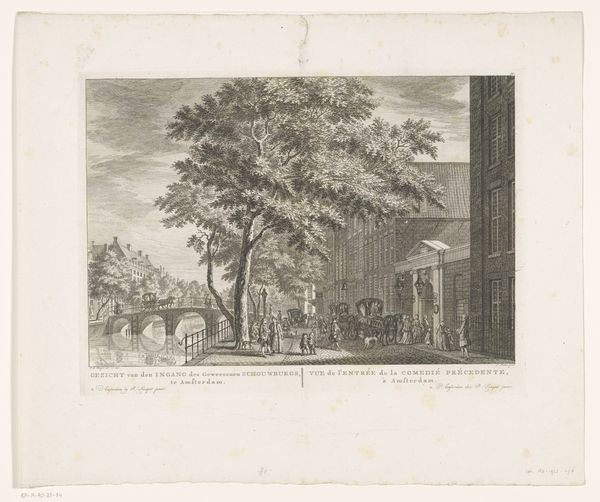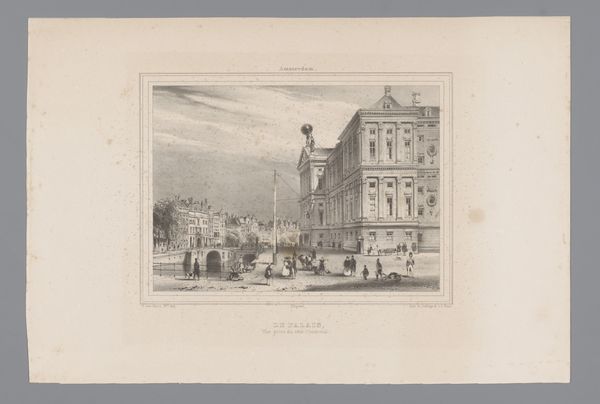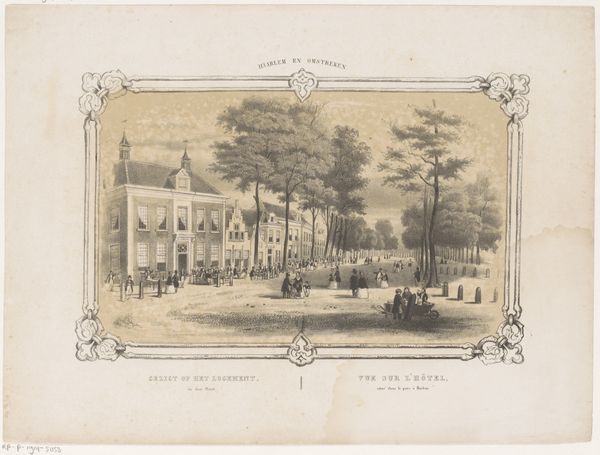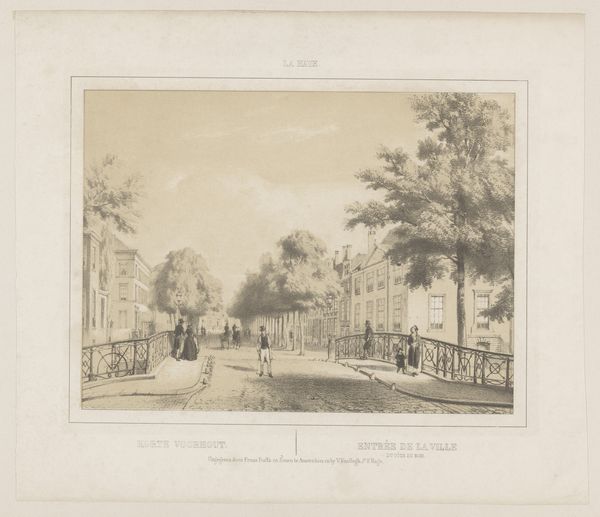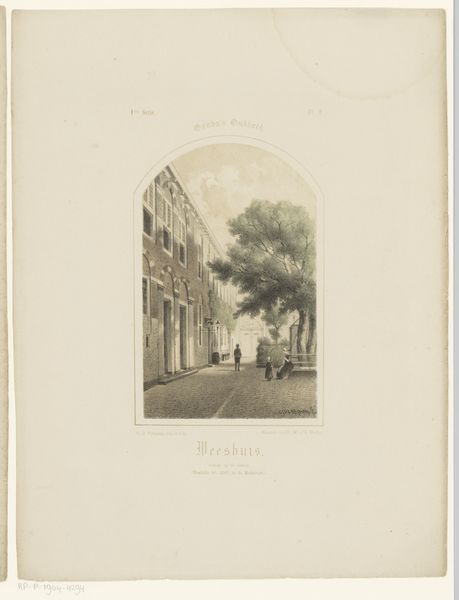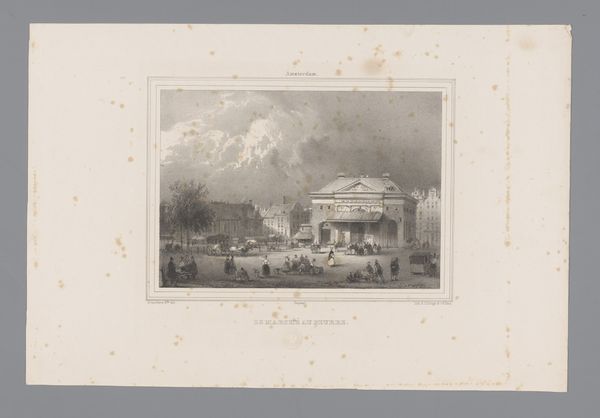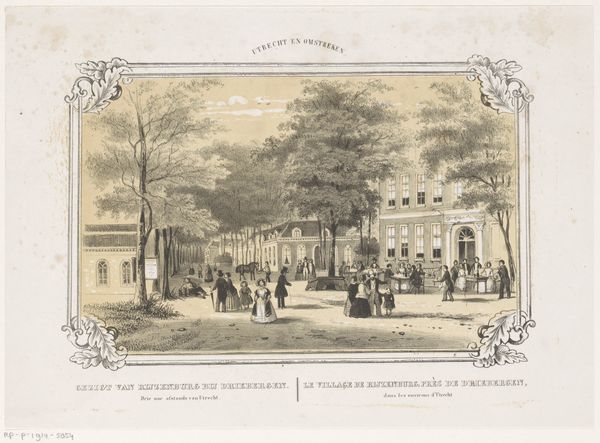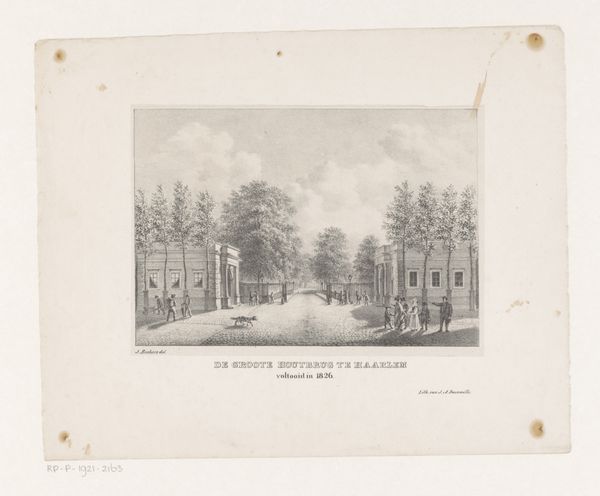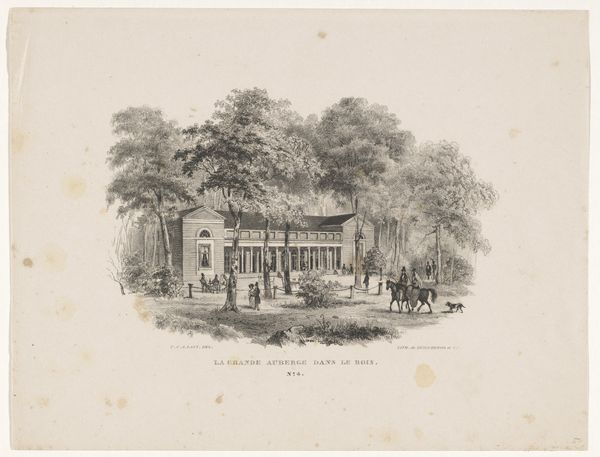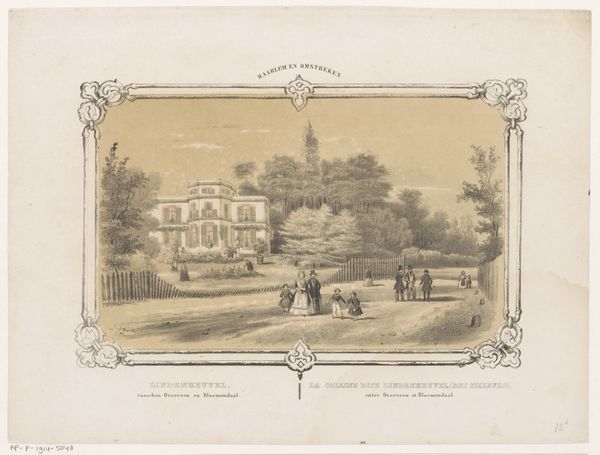
print, engraving
#
16_19th-century
# print
#
landscape
#
cityscape
#
engraving
Dimensions: height 145 mm, width 220 mm
Copyright: Rijks Museum: Open Domain
Editor: Here we have A. Cruse’s "Gezicht op de boulevard en poort van Laken," an engraving from the 19th century. It’s a cityscape depicting a boulevard with a grand archway. I'm really struck by the stark contrast between the light, open boulevard and the imposing architecture. What is the context behind such scenes? Curator: This image offers insight into 19th-century urban planning and the social function of public spaces. Boulevards like this one were deliberately designed to showcase a city's power and modernity, a strategy adopted by many European cities during this period. How do you think this image of the boulevard would function politically? Editor: Well, seeing the gate gives me the impression of a carefully curated experience; there's a defined boundary, which emphasizes the grandeur and perhaps limits access. This presentation of order and prosperity feels…calculated. Curator: Precisely. It represents not just a physical space, but an ideological one. These grand spaces were very intentionally laid out for the public and usually placed or displayed prominent public monuments, giving subtle reminders about who controls such urban spaces. Think about who would be commissioning and consuming these images, and what messages they’d be keen to spread. Editor: So, this isn't just a pretty picture of a city, it’s an intentional representation of power and control through urban design? Curator: Absolutely. The act of commissioning and disseminating this type of cityscape was inherently a political act, shaping public perception and reinforcing a particular narrative. Notice that the inclusion of leisurely figures—like those promenading on foot and horseback—promotes this controlled, wealthy public sphere. It creates an ideal audience. Editor: This has completely changed how I see cityscapes! I will never look at those old prints without considering the role of such cityscapes in establishing power! Curator: It’s a reminder that art isn't created in a vacuum but is intimately connected to the social and political forces of its time. Keep asking questions about who benefits from a certain representation.
Comments
No comments
Be the first to comment and join the conversation on the ultimate creative platform.
